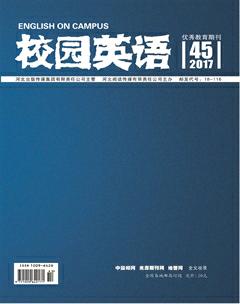TheComparisonofInterpretationTrainingModesinChinaandWesternCountries
HuYawen
【Abstrac】With the development of society and globalization, interpretation as a tool also accelerates the process of the intercultural communication. By comparison, the differences between these modes are clearly shown, regarding the merits and demerits of such training we can learn from each other efficiently.
【Key words】Interpretation Training; Modes; Comparison; Thinking Pattern; Scientific and Systematic Theory
Introduction
Interpretation derives from the early period of human world can be divided into the interlingual and intralingual interpretation. Due to the demand of communication among different tribes that translation and interpretation came into being.
Nowadays, many interpreters call for more research on interpretation theory and training modes.
Chapter two Literature review
2.1 Literature review home and abroad
2.1.1 Literature review abroad
There are four stages for interpretation development in western countries. During the pre-research period, there is no more theoretical researches except two brochures:Rozen(1956) and Herbert(1952).
Then 1980s witnessed the role-shift of interpreters. The classic theory theorie du sens from ESIT emphasized the transmission of meaning instead of language structures.
The last half of 1980s is the beginning of Renewal Period. From then, the research on interpretation becomes more scientific and cross-disciplinary.
2.1.2 Literature review at home
The development of interpretation in China started from the early period of 1980s without systematic theory. It was in 1996 that the first national conference on interpretation started the discussion on the reform of interpretation teaching. However, it was still without deeper discussion on theory.
Nevertheless, the second national conference on interpretation in 1998 shows that the theory add into the teaching, but the research that time are not macro enough.
Chapter Three Analysis on different interpretation training modes
3.1 Comparison with different interpretation training modes
3.1.1 Interpretation training modes in China
The interpretation training as a formal project comes into being late in China.
One of the famous interpretation training modes in this field is called Xiada Model from Xiamen University in China, they put up with a mode in depth based on the Effort Models created by Daniel Gile from France. Xiada Model is represented as I=S + C + P, that is Interpreting=Interpreting Skills + Comprehension + Production.endprint
3.1.2 Interpretation training modes in western countries
The interpretation research in western countries is based on the systematic and integrated theory.
In 1995, professor Gile who is the prominent researcher on interpretation put up with the two most influential modes on simultaneous interpreting and consecutive interpreting. The two formulas above reflect the two different interpreting process, in which Gile also emphasizes the importance of comprehension, and puts up another formula C=KL+ELK+A, that is Comprehension=Knowledge for the language + Extra-Linguistic Knowledge + Analysis.
Chapter Four The influence of comparison between two typical modes
In fact, the systematic and scientific training modes can be summarized from the interpretation training. As for interpreters, they need to keep the strong consciousness on multilingual thinking, and to know the different language systems. The researchers should start on the different thinking pattern, combining with the neurophysiology to explore the brain while receiving the source language, and how can source language be linked with and transferred into the target language in language area to stimulate to finish the interpretation. Besides, what need to pay attention is how can we take the special training of thinking in the transferring of bilateral-languages.
Chapter Five Conclusion
From the comparison, we found that there is a very large development space on this subject;we ought to pay more attention to the interpretation theory and explore the more scientific approach, besides, it also needs to strengthen the connection between interpretation and other subjects;the inspiration on the theoretical consciousness for interpreters is another essential part in training so that to help interpreters think and practice under the theories;what we really need are the pertinent principles and theories designed for Chinese interpreters.
References:
[1]Daniel Gile.Basic Concepts and Models of Interpreter and Translator Training[M].2nd Edition,The Netherlands:John Benjamins Publishing Company,1995.
[2]D.塞萊斯科维奇,M.勒代雷.口译训练指南[M].闫素伟,邵炜,译.北京:中国对外翻译公司,2007.endprint

